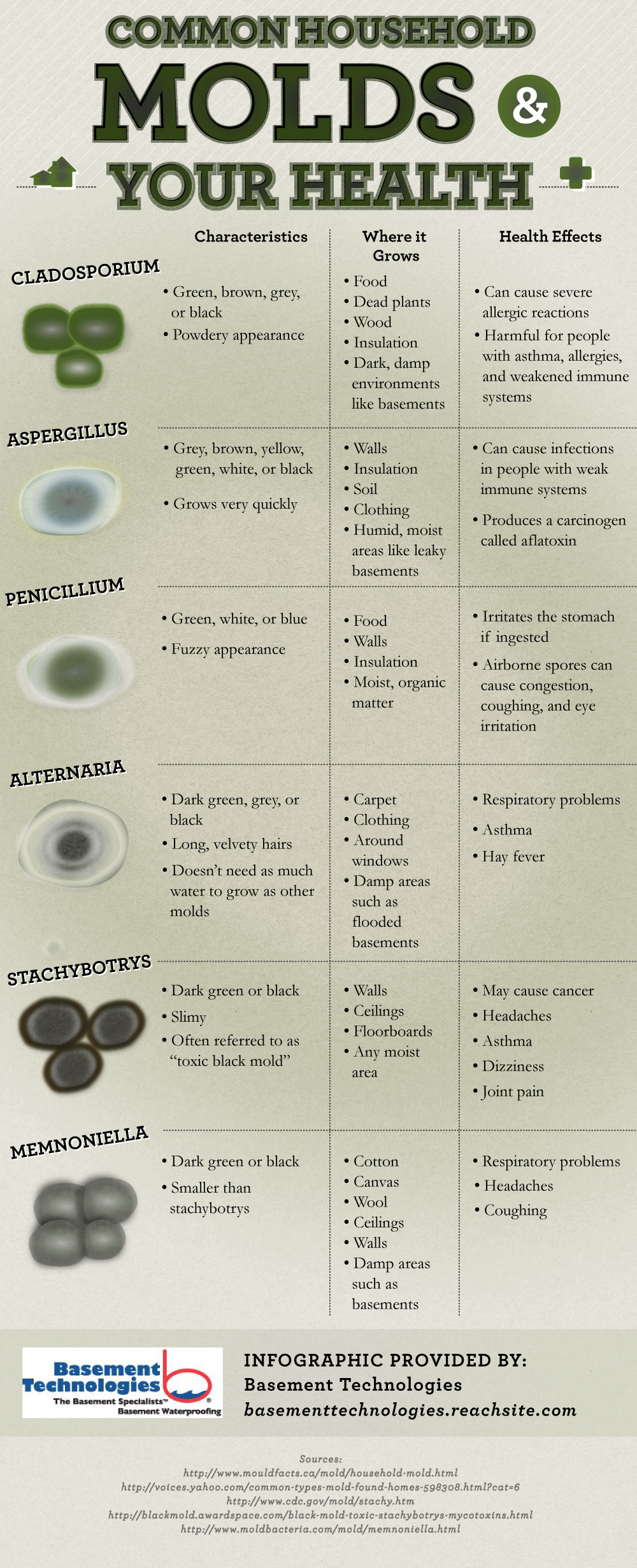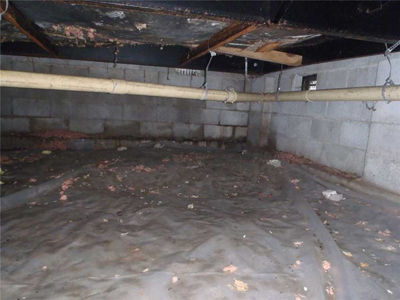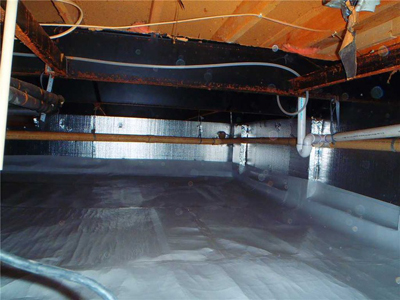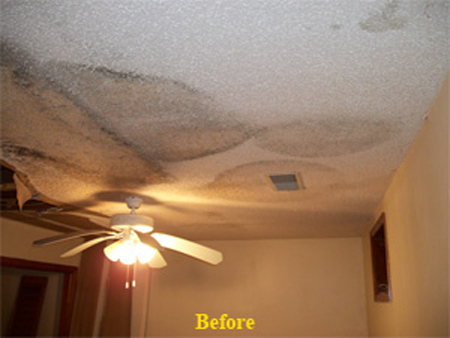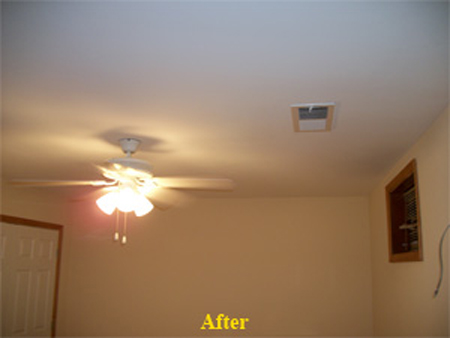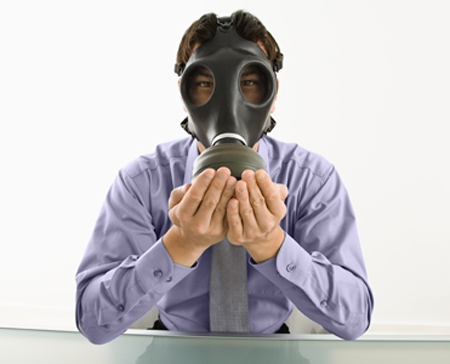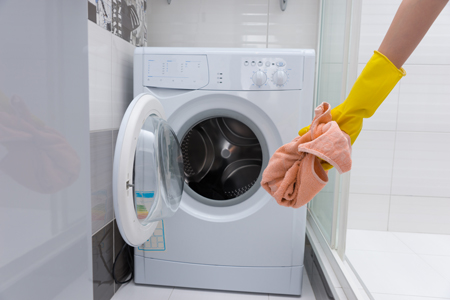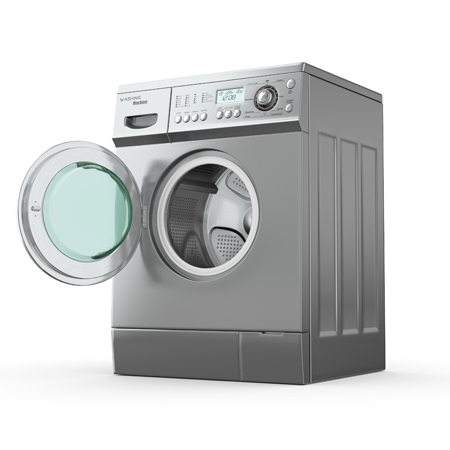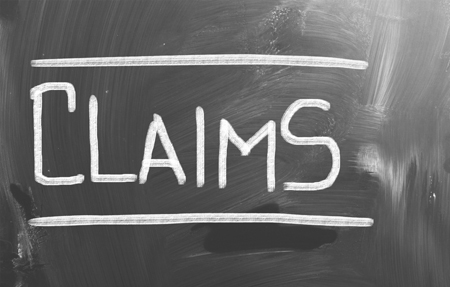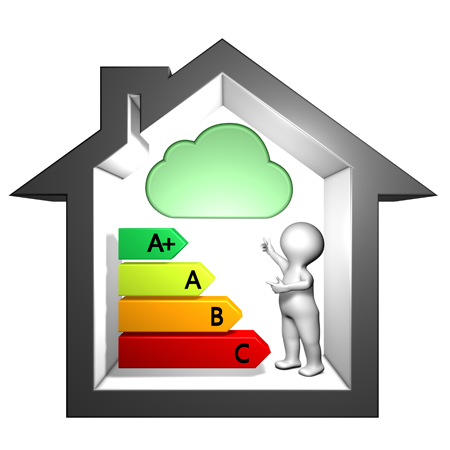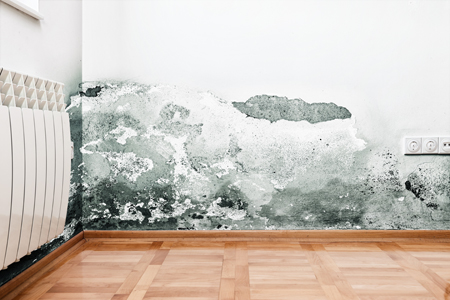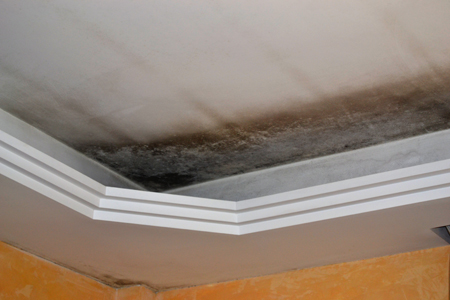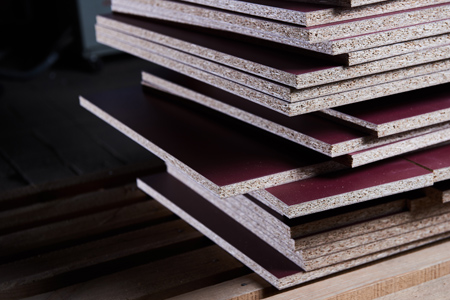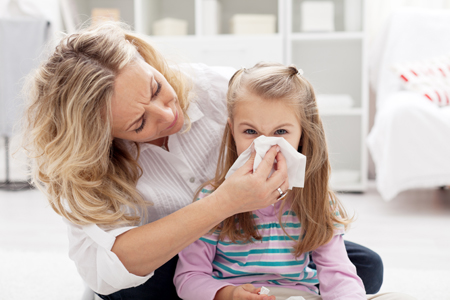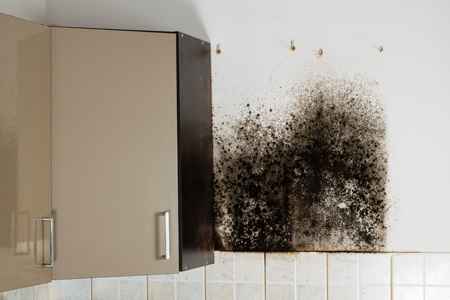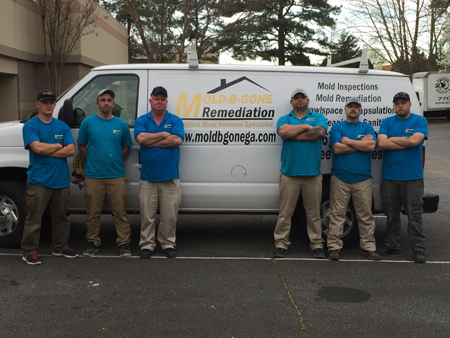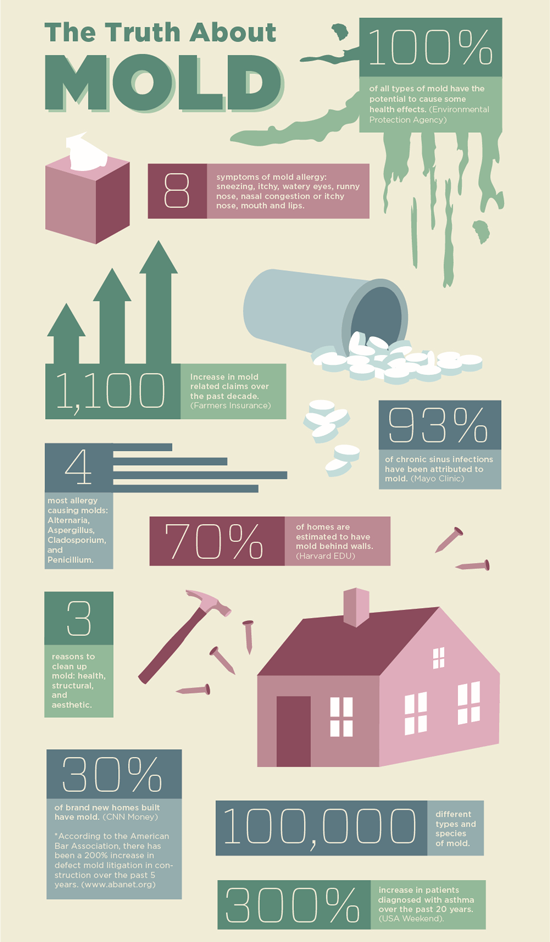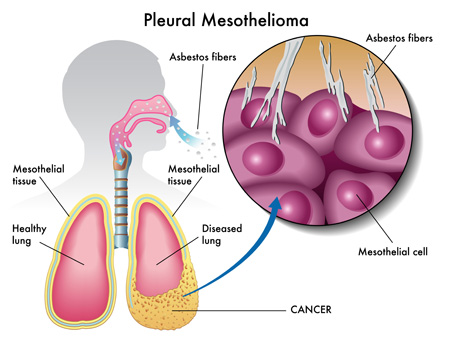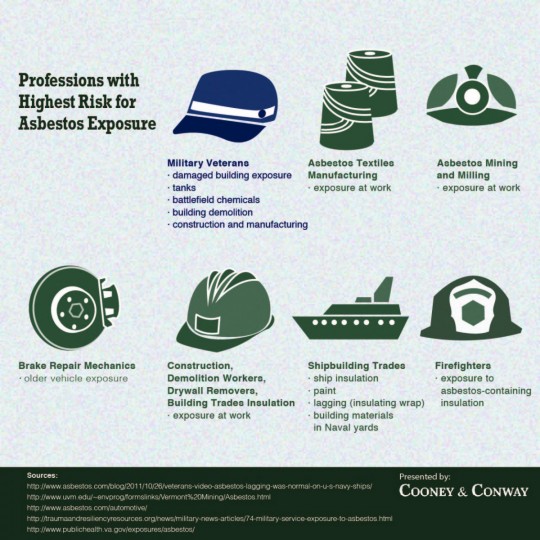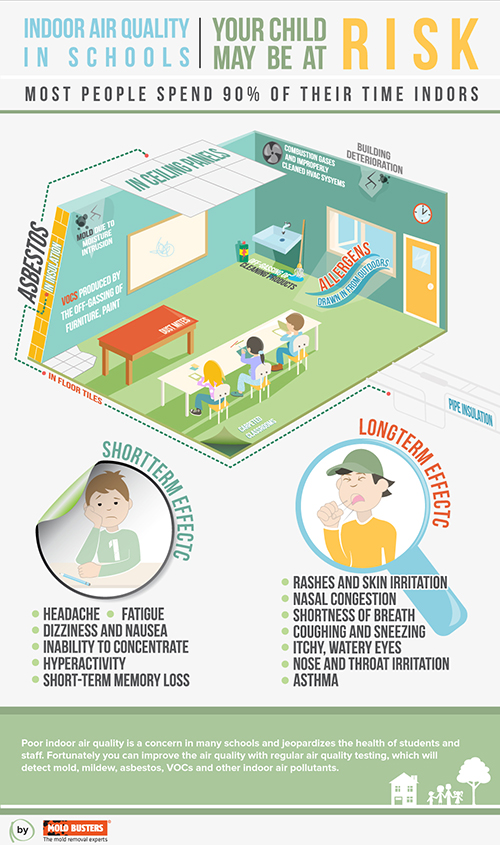
by Eric Brown | Nov 11, 2016 | Uncategorized
Mold B Gone Thanks Our Veterans!

Mold B Gone Thanks Our Veterans!
On this special day, Mold B Gone wishes to thank all serving military personnel and past for their service to our country.
Let us pause and salute all who have served and honor the tremendous sacrifices made by members of the U.S. armed forces and their families to preserve our freedom.
But the freedom that they fought for, and the country grand they wrought for, Is their monument to-day, and for aye. (Thomas Dunn English)
The hero is the man dedicated to the creation and / or defense of reality-conforming, life-promoting values. (Andrew Bernstein)
As we express our gratitude, we must never forget that the highest appreciation is not to utter words, but to live by them. (John Fitzgerald Kennedy)
Don’t interfere with anything in the Constitution. That must be maintained, for it is the only safeguard of our liberties. (Abraham Lincoln)

by Eric Brown | Nov 4, 2016 | Basement Mold, Flood Clean Up, Health, Indoor Air Quality, Mold Facts, Mold In Apartment, Mold Remediation, Mold Removal, Questions and Answers, Water Damage Restoration
Why Does My Basement Smell Bad?

Why Does My Basement Smell Bad?
If you’ve started to notice a musty smell in your basement, you may have mold in your home.
Musty odors are sometimes described as earthy and urine like.
Basements have the potential to be dark and damp places.
Add water and moisture to this equation and you have the perfect conditions for mold growth.
The odour you smell is most likely caused by the mold excreting mycotoxins.
Molds will release spores in the air as a defense mechanism to find more moisture and food, contributing to further mold growth.
If you do have mold growth, the key is to contact Mold B Gone to investigate the situation.
Mold B Gone has been serving Atlanta, Georgia area consumers and business owners since 2009.
Over the years, we have removed mold from many crawl spaces. In addition to crawl space mold removal, the other area of a home that we specialize in is the basement. This is one of the core reasons we offer our basement finishing service.
This article provides you with ten tips to prevent mold in your basement.
Implement these tips to avoid future headaches and costly mold removal in the future.
Top 6 Mold Species You Will Find In Your Basement!
The infograpnhic below lists the top 6 mold species that could be growing in your basement.
To determine the species our staff will either gather the spore count in the air using our air quality testing equipment or take swab or tape samples of visible mold. The samples are then sent to an independent lab to verify the species and spore count.

Top 6 Mold Species You Will Find In Your Basement
Top 10 Tips To Prevent Basement Mold!

Top 10 Tips To Prevent Basement Mold!
Fix The Flooding Source!
The first step to preventing future flooding is to determine the cause and fix it. Most basements flood because of backed up drains, leaky pipes, human error (i.e. leaving a tap on), sewer back ups, the lack of a sump pump and/or a malfunctioning sump pump.
Start The Clean Up As Soon As Possible!
The onset of mold will begin within 24 to 48 hours, so it is essential that you begin the clean up immediately.
Hire Experienced Professionals!
If mold is not properly contained and cleaned properly, it can become airborne and contaminate even larger areas of the property.
You need to hire properly trained professionals, like Mold B Gone, who understand how to properly restore a water damaged property and prevent mold growth. Mold growth prevention is important because of the health impact it has and also because mold will impact the structural integrity of the property.
Remove All Wet and Contaminated Materials!
Most insurance companies will not recommend a complete gut for cost savings. Usually they recommend that it is necessary to only remove one foot of drywall above the flood line.
We do not because this could result in long term mold problems because moisture can creep up behind the surface. For this reason, we recommend a complete gut of the basement because the extra short term cost could result in significant long term cost savings.
The last thing you want to happen is for a reconstruction to occur only to find out six months later that you now have a mold problem.
Removal of all the drywall is not our only recommendation. We also suggest the removal of following: all flooring, including the sub-floor; insulation because it absorbs moisture; and finally, if the electrical panel was submerged under water, it should be replaced as well.
Avoid Using Bleach For Clean Up!
As stated by Michael Pinto, CEO of Wonder Makers Environmental:
“Perhaps the most misunderstood aspect of bleach when proposed as a cleaner or sanitizing agent is that its effectiveness is greatly reduced in the presence of organic material. To be a successful sanitizer, bleach must be used on clean materials and surfaces. This is why bleach products are used in the laundry after the wash cycle or in a commercial kitchen as a component in the third sink after the dishes have been washed and rinsed. The efficacy of bleach as a sanitizer is also compromised by heat and light. Despite the fact that the chlorine odor may linger for some time after use, bleach loses strength so quickly that it is not considered to have a residual effect that would prevent future bacterial or fungal growth.”
Do Not Begin Any Rebuild Until the Basement Is Completely Dried Out!
We understand that a flooded basement disrupts your life and you want to resume your normal routine as soon as possible. However, patience is the key.
To avoid any future mold issues that could make you sick, measure the humidity levels and ensure that job was done properly by hiring a third party to perform an indoor air quality test.
In addition, if the flood water was category 3, we recommend that swab tests be performed to ensure that the cleaning process was done effectively.
Only after it is verified that the basement is completely dry and sanitized and clearance testing verifies that the indoor air quality is healthy should the basement rebuild begin.
Properly Insulate Your Basement!
According to Mike Holmes, a respected contractor, insulation is one of the most important factors in preventing basement mold:
“When air, which is full of moisture, leaks into that insulation, it will inevitably lead to mould. Here’s why: Your basement, like every room in your home, has its own natural air convection. The air nearest the ceiling is warmer, and the air nearer the floor is cooler. The cold air at the bottom pushes the warm air up. As it rises, it comes into contact with the cooler exterior wall and releases the moisture it’s holding. It condensates. That air and moisture — if it’s able to get into the batt insulation through a gap in the seal — will wick into the insulation. Over time, it will soak that batt to the point that water can drip down the walls and pool on to the floor….You need a thermal break to stop hot from meeting cold….So, use closed cell spray foam insulation or rigid foam insulation, which will provide a thermal break and not trap any moisture. If you’re using foam insulation boards, make sure you Tuck Tape every seam, and spray-foam all corners and joints to create a 100% seal and a perfect thermal break. That way, you’ll know that anything you do inside your finished basement won’t have to be torn out in a few years because of mould.”
Cross-Ventilate!
If possible, open the windows on all sides of your basement in the evenings when the air is cooler to create a cross-ventilation air flow which will prevent excessive moisture and also ensure that a steady stream of fresh air is circulating throughout the basement.
Ensure Water Drains Away From Your Home’s Foundation!
One of the most effective ways to prevent water intrusion is to ensure that water is not sloping towards the foundation of your home but away from it. This is particularly important if your basement walls are porous and can trap moisture, which can lead to mold. To avoid this, ensure that the ground slopes away from the foundation walls of the home and your downspouts extend at least 6 feet away from the property.
Invest In A Dehumidifier!
To prevent excess moisture in your home, use a dehumidifier and consider waterproofing your basement by sealing cracks in the floor and walls with hydraulic cement and a concrete waterproofing sealer where the floor meets the walls.
Got Basement Mold Questions?

Got Basement Mold Questions?
Call 678-697-6267, or contact us via e-mail.
We specialize in mold detection and mold removal and have helped 1000s of customers because we understand why mold grows and follow an 8 step procedure to ensure that the cause of the mold problem is fixed before we remove the mold.
Our ultimate goal is to ensure that mold does not grow back, which we back with our guarantee on our services.
We look forward to serving you! 🙂

by Eric Brown | Oct 21, 2016 | Basement Mold, Crawlspace Mold, Health, Indoor Air Quality, Mold Facts, Mold Information, Mold Remediation, Mold Removal, Questions and Answers, Toxic Mold
Top 3 Reasons Your Crawlspace Has Mold!

Top 3 Reasons Your Crawlspace Has Mold
Crawlspaces are the ideal environment for mold to thrive.
Most crawlspaces are dark, dirty, and humid. Bugs like to live in there. They’re vented to the outside air in the summer (and in the winter if you neglect to close your vents) which can be very humid and this defeats the purpose of venting.
Mold is a fungus that requires moisture and high humidity to grow and thrive.
Like plants, mold has cells. However, unlike a plant that has chlorophyll and able to makes it’s food through photosynthesis, mold can not feed without moisture.
Mold reproduces by releasing it’s spores, this is mold’s survival mechanism.
In addition to moisture, mold also requires the right temperature of 41 degrees fahrenheit up to 100 degrees fahrenheit, common in Atlanta, Georgia and the South.
The final ingredient mold needs to thrive is food: high cellulose materials such as paper and wood, drywall, wallpaper, carpet, ceiling tiles, dust, and dirt.
Now that you understand why mold grows in your crawlspace, the remainder of this article will list and explain the top three reasons why you have moisture in your crawlspace and what you can do to fix the humidity issues.
How To Measure The Relative Humidity Of Your Crawlspace?
The easiest way to determine the relative humidity of your crawlspace is to use a hygrometer or you could install a digital thermo-hygrometer with a remote sensor to track it.
If the relative humidity is greater than 50% this could cause moisture issues that leads to mold.
Mold will begin to grow at 50%, and will thrive when the humidity is greater than 70%.
The key to ensuring that your crawlspace does not become a source of mold is to figure out how to control the humidity.
Listed below are the top three reasons your crawlspace has high humidity.
#1 Water Accumulation
If your crawlspace has standing water, you probably have a drainage problem or a plumbing leak. This needs to be fixed immediately.
You do not want water to accumulate in your crawlspace because this will compound your potential mold problems, not to mention as mold grows it will impact the indoor air quality of your home and health.
#2 Moisture Evaporating from the Ground
When homes are built with crawl spaces, most builders neglect to cover the ground, meaning that the crawlspace is covered with dirt.
Dirt has moisture and as the moisture evaporates, it will increase the humidity in your crawlspace.
Unfortunately, this is a common problem in Atlanta, Georgia, and other southern states. To prevent moisture from evaporating from the ground, the easiest solution is to cover it up with a vapor barrier during crawlspace encapsulation.
#3 Outdoor Air Coming in through the Crawl Space Vents
The third reason your crawlspace could have moisture issues is through the vents.
When you bring outdoor air into the crawlspace, the relative humidity can increase.
Cool air cannot hold as much moisture as warm air, so the air that enters is now closer to its saturation point, referred to as the dew point.
It might be 60% relative humidity outside, relative to a temperature of 90 degrees fahrenheit, but when that air enters the crawlspace and cools down to 75 degrees fahrenheit, the relative humidity jumps up to 95%.
In the past, we were told that crawlspaces needed to be ventilated. Now, however, we are learning that crawlspaces need to be treated almost as if they were living spaces. In other words, areas that are in contact with your living space affect your living space.
Fixing Your Crawlspace Humidity and Mold Problems
If your crawlspace is vented and the relative humidity is high, you need to fix the problems. It is not as simple as installing a dehumidifier either.
If you have water accumulation, the source of the water must be addressed. If it is a plumbing issue, fix the leak. If the problem is caused by drainage, this must be fixed as well.
If the problem relates to moisture evaporating from the ground or outdoor air coming into your vents, this can be fixed with crawlspace encapsulation.
Mold-B-Gone Remediation, LLC specializes in drying out damp crawlspaces and turning them into dry, healthy foundations for your home.
Our dry-space crawlspace system includes the following:
- Thorough cleaning of the crawlspace, including mold removal and prevention.
- Installation of a wall-to-wall guide, durable, 14 mil vapor barrier.
- Attachment of the vapor barrier over ground and up sidewalls to 6 inches below floor joists.
The end result is an energy efficient, healthy home.
Got Crawlspace Mold Questions?
If you are concerned about humidity in your crawlspace, call 678-697-6267 or send us an e-mail. We look forward to serving you! 🙂

by Eric Brown | Oct 7, 2016 | Health, Indoor Air Quality, Mold Facts, Mold Inspection, Mold Remediation, Mold Removal, Questions and Answers
Atlanta, Georgia Mold Testing, Mold Removal and Mold Remediation Experts!

Atlanta, Georgia Mold Testing, Mold Removal and Mold Remediation Experts!
Mold comes from excessive moisture or water accumulation indoors.
While it is impossible to eliminate all molds and mold spores, controlling moisture can control indoor mold growth.
All molds share the characteristic of being able to grow without sunlight.
Mold only needs a viable seed (spore), a nutrient source, moisture, and the right temperature to proliferate.
This explains why mold infestation is often found in damp, dark, hidden spaces.
If left unchecked, molds gradually damage building materials and furnishings.
Eventually mold can cause structural damage to a wood framed building, weakening floors and walls as it feeds on moist wooden structural members.
The purpose of mold remediation is to correct the moisture problem and to remove moldy and contaminated materials to prevent human exposure that can impact health and further damage to building materials and furnishings.
Mold Testing

Mold Testing
Reports on the area and the extent of contamination will be used to determine the scope of the mold remediation.
Testing before the beginning of a remediation process is a very important aid to understanding the mold types in the home and the remediation process.
Testing for mold after the remediation is completed is a vital step to ensure that your home or business has been thoroughly remediated and safe for you and your family.
Mold-B-Gone Remediation, LLC uses Third Party Indoor Environmental Professionals for all of our Post Testing on all homes and businesses to ensure the quality of work performed by Mold-B-Gone Remediation, LLC and the safety of the homeowner.
Mold Remediation Process

Mold Remediation Process
Our goal is to do the job right the first time, meaning we follow an eight step mold removal process:
- Assess The Cause of The Contamination.
- Identify the Species of the Mold.
- Scope of Work.
- Containment, Decontamination Chambers and Negative Air.
- Removal of the Mold.
- Odor Removal.
- Cleaning, HEPA Vacuuming and Air Scrubbing.
- Post Remediation Verification.
For a detailed explanation of our eight step process, please click here!
Helping Sensitized Individuals With Remediation

Helping Sensitized Individuals With Remediation
Guiding you every step of the way, Mold-B-Gone Remediation, LLC explains the process for inspecting your home, taking necessary procedures to eliminate any mold found within your household and returning your home back to a safe and comfortable environment.
Mold-B-Gone Remediation has removed mold from thousands of homes and business’s over the years and we have never failed a test on any home or commercial building that we have cleaned. We have a perfect 100% clean rate since we opened our doors. We are very proud of our record and encourage anyone to speak with the company that test behind us about our reputation.
Environmental Process

Environmental Process
Water Mitigation
- Identification of the problem
- Repair of the problem
Containment Source Removal
- Isolation
- Negative Pressure
- Detailed Cleaning
- Post-Remediation Testing
Control of Transport Mechanisms
- Air Infiltration
- HVAC
Contents Decontamination
- Soft Goods
- Non Porous
Cleaning of Reservoirs
- Ceilings
- Walls
- Floors
Examples of Mold Removal
[huge_it_gallery id=”2″]

by Eric Brown | Sep 30, 2016 | Front Loading Washing Machine Mold, Health, Indoor Air Quality, Mold Facts, Mold Information, Questions and Answers, Washing Machine Class Action Law Suit
Rebate Available For Front-Loading Washers With Mold Problem!

Rebate Available For Front-Loading Washers With Mold Problem!
In 2014, Consumer Reports published an article about consumer problems with front-loading washing machines. The primary complaint many consumers had was mold issues in their washers.
It turns out that the manufacturers of these washing machines knew about this problem, but still continued to sell the washers to consumers. This resulted in a class action law suit. The lawsuits claimed that the washers fail to self-clean. As a result, they accumulate bacteria and mold, resulting in bad odors, ruined laundry, and for the mold-sensitive individual, health issues.
This article will explain why your front-loading washing machine has mold problems and what you can do to get compensated now that the suit has been settled.
Why Front-Loading Washing Machines Have Mold Problems!
The core problem is a design flaw that causes the machine to accumulate mold because mold grows in the gaskets of the high-efficiency machines.
For many people this is not an issue. However, for the mold sensitized, for infants and children, people with asthma and allergies to mold, and compromised immune systems, washing machine mold growth has been an issue.
If you have one of the flawed washing machines, here are some things you can do:
- Wipe the door gasket and glass dry once you’re done.
- Clean the detergent dispenser and any attachments once or twice a month.
- Run a dehumidifier if your laundry room is damp.
- Keep the washer door ajar between loads to allow air to circulate. If you have small children, keep the laundry-room door locked.
- If none of this works, call the manufacturer for service and save all mold-related paperwork, even after the warranty expires.
You also qualify for compensation if you have a washing machines that falls under the settlement. Details below.
Rebate Details On Front-Loading Washing Machine Mold Problems!
On September 23, 2016, Judge Christopher A. Boyko of the United States District Court for the Northern District of Ohio granted final approval to the settlement of the Whirlpool front-load washer mold cases.
The claims period closes soon, providing class members who experienced mold or odor the choice of $50 cash, a 20% discount off purchase of a new washer (worth $148.50) or, if they paid out of pocket or to replace their washer due to mold /odor, dollar for dollar cash reimbursement up to $500.
Owners of the affected Whirlpool, Kenmore, and Maytag-brand front-loading washers can now submit claims as part of the settlement of several class action lawsuits brought on claims that the machines fail to adequately self-clean. The suits alleged that certain Whirlpool, Kenmore, and Maytag brand front-loading washing machines manufactured between 2001 and 2010 fail to adequately self-clean themselves of laundry residue, resulting in mold or mildew buildup that can cause bad odors and ruined laundry.
If you are included in the Settlement, you may qualify for one of a variety of benefits including:
- Cash payment.
- Rebate on the purchase of a new washing machine or dryer.
- Or reimbursement for out-of-pocket expenses incurred due to past mold or odor problems in your washing machine.
Please read the FAQ notice on the WasherSettlement.com settlement website carefully.
For a full list of washers covered by the class action lawsuit, click here.
To see details of the settlement or for more information, visit www.washersettlement.com or call 844-824-5781.
Submit A Claim!

Submit A Claim!
The only way to get a cash payment, a rebate for the purchase of a new washing machine or dryer, or reimbursement for the repair or replacement of a washing machine with mold or odor problems is to complete and submit a Claim Form, including all required documentation.
The deadline for submitting claims for Whirlpool, Kenmore and Maytag customers is October 11, 2016.
The deadline for submitting claims for LG customers is October 10, 2016.
Got Mold Questions?
If you have mold or IAQ questions, please give us a call, 678-697-6267 or send us an e-mail. We look forward to serving you! 🙂

by Eric Brown | Sep 25, 2016 | Health, Indoor Air Quality, Mold Facts, Mold Information, Questions and Answers
What Is Indoor Air Quality Testing?

Why Should I Have An Indoor Air Quality Test?
Most people are unaware that their indoor air could be polluted. Indeed, today, we spend 90% of our time indoors, relying on our HVAC systems to create a constant stream of healthy air. Our health is dependent on the the quality of the air we breathe. The problem with indoor air pollution is that is not visible to the naked eye, meaning the quality of your air could be making you sick without you even knowing it. Despite your efforts to maintain a clean and healthy household, you still may be getting sick because of indoor pollutants.
Symptoms of Poor Indoor Air Quality
Our bodies are designed to rid ourselves of toxins and pollutants, this is one of the reasons that we get sick and experience colds and flus. However, if you or other’s in your family seem to always be sick, the air you are breathing could be the cause.
Do you often experience the following health issues?
- Headaches;
- Respiratory issues such as asthma, sinusitis, and other respiratory infections such as bronchitis and pneumonia;
- Excessive coughing and/or a breathless feeling;
- Dizziness, confusion, malaise, trouble concentrating, and other cognitive disorders;
- Skin irritation, itchiness, and rashes;
- Ear and/or eye infections
If you consistently experience these symptoms, the air you are breathing could be the cause.
A simple test is to record how you feel when you are away from your home or business. If you feel sick when you are in your home or business, but feel much better when you are away, then this could be a clue that the air is making you sick.
What Causes Poor Indoor Air Quality?

What Causes Poor Indoor Air Quality?
Contaminated air can seep in from the outside or could be caused by indoor sources like construction materials, consumer products, mold, insects, and pets. The effect of pollutants is compounded by poor ventilation which allows pollutants to accumulate to unhealthy levels.
Poor indoor air quality in your home or business could also be caused by factors such as the building design, heating/cooling design, and/or previous water damage.
Other potential causes of poor indoor air quality include the following:
- High humidity levels.
- Airborne dust problems from poorly maintained ducts or other sources in the building.
- Volatile Organic Compounds (VOC’s) which are chemicals released by building materials and furniture.
- Inadequate ventilation caused by mechanical or building issues.
- Combustion problems leading to high levels of Carbon Monoxide (CO) or Carbon Dioxide (CO2).
- Sewer gas leakages, leading to odors.
- Recurring water damage, causing growth of mold and other bacteria.
- Radon, the second highest cause of lung cancer, most likely seeping through the foundation in your basement.
- Radioactive marble or granite in the home.
- Air borne asbestos, a cause of mesothelioma.
What Should I Do?

What Should I Do?
The easiest way to determine if the air you are breathing is making you sick is to call an indoor air quality specialist to test the air. Indoor air quality professionals have specialized equipment that can test the air for radon, mold spores, and other pollutants.
At Mold B Gone, our Indoor Air Quality testing uses OSHA, NIOSH, and EPA testing procedures to investigate indoor air quality complaints. We can test for 100s of compounds, including gases, chemicals, dust, and biological samples to give you a profile of your air.
One of the services we specialize in is mold testing, which is done by taking air samples from both inside and outside the building so the spore numbers can be compared with each other. If the testing shows high mold spore counts, then a mold inspection and mold removal plan will be provided to you.
In order to ensure the most accurate and reliable results, Mold B Gone utilizes specialized calibration instruments and sample handling procedures. In addition, controlled samples are compared with yours to ensure the most accurate results possible. We use Third Party Labs to analyze the results of all of the samples we take to provide you with a detailed air quality report and recommendations.
Fall Mold Inspection Promotion!

Fall Mold Inspection Promotion!
Contact Mold B Gone for a free mold inspection, a value of $250, PLUS if you need any testing, you get that for 50% off!
Got Indoor Air Quality Questions?
If you are concerned that you may have indoor air quality issues and have questions, call 678-697-6267 or send us an e-mail.

by Eric Brown | Sep 16, 2016 | Attic Mold, Basement Mold, Beware Of Mold When Buying A Home, Bleach and Mold, Can Black Mold Poison You?, Can Mold Kill?, Commercial Mold Remediation, Commercial Mold Removal, Crawlspace Mold, Dead Mold Spores, Health, How Toxic Is Mold?, Indoor Air Quality, Killing Mold, Mold and Asthma, Mold and Sinusitis, Mold Facts, Mold Information, Mold Inspection, Mold Remediation, Mold Removal, Mold Removal Cost, Questions and Answers, Stachybotrys Black Mold, Toxic Mold
Top 10 Reasons You Need To Be Aware Of Mold!

Top 10 Reasons You Need To Be Aware Of Mold!
September 2016 marks the 8th annual Mold Awareness Month started by the National Indoor Mold Society:
“The purpose of National Indoor Toxic Mold Awareness Month is to inform, educate, and raise awareness about the adverse health effects due to exposure of indoor molds and mycotoxins.” (Executive Director, Letitia Peters)
According to Michael Pinto:
“The reason that mycotoxins are suspected of poisoning people is based on both science and observational connections. “Mycotoxin” is the term that scientists use for a variety of chemical compounds that are produced by fungi during their growth cycle (the official term for mycotoxins is “secondary metabolites”). The suffix toxin is found at the end of the word mycotoxin because a great number of these mold-produced chemicals have been proven to be poisonous to both insects and animals—including people.”
One of the goals of Mold B Gone is to educate consumers in the Atlanta, Georgia area about mold. We believe that every month should be mold awareness month. Since launching this site, we have had nearly 37,000 views from individuals interested in learning more about mold.
There are three key lessons you need to know about mold:
- Mycotoxins kill other things, like bacteria and viruses, so mold can continue to grow.
- Mold spores, whether dead or alive, can cause adverse health effects.
- There is no practical way to eliminate all molds and mold spores in the indoor environment; the way to control indoor mold growth is to control moisture.
Considering that some molds, like Stachybotrys chartarum and Aspergillus, produce myctoxins that cause sickness, the purpose of this article is to list and explain the top 10 reasons you need to be aware of mold.
#1 Mold Needs Less Than 2 Days To Begin Growing!

#1 Mold Needs Less Than 2 Days To Begin Growing!
Mold requires three key ingredients to grow:
- Food: wood & wood products; paper and other paper products like cardboard and wallpaper; leather; fabric and upholstery; grout; painted walls; cement; plaster (drywall); ceiling tiles; insulation materials; and carpet.
- The ideal temperature of 41 degrees to 100 degrees Fahrenheit; and
- Moisture, the key ingredient.
In the presence of moisture, the ideal temperature, and ample food, mold will begin growing within 24 to 48 hours. This is the reason that water damage restoration is so important during a flood event!
#2 Mold Causes Chronic Sinusitis!

#2 Mold Causes Chronic Sinusitis!
According to Doctors at the Mayo Clinic, David Sherris, Eugene Kern, and Jens Ponikau, chronic sinusitis is caused by a fungus and is an immune reaction:
“Medications haven’t worked for chronic sinusitis because we didn’t know what the cause of the problem was. Fungus allergy was thought to be involved in less than ten percent of cases. Our studies indicate that, in fact, fungus is likely the cause of nearly all of these problems. And it is not an allergic reaction, but an immune reaction. This is a potential breakthrough that offers great hope for the millions of people who suffer from this problem. We can now begin to treat the cause of the problem instead of the symptoms. Finally we are on the trail of a treatment that may actually work.”
This conclusion was based on a research study of 210 patients with chronic sinusitis. The Doctors collected mucus samples from the patients’ noses and discovered fungus in 96 percent of the patients. In addition, they identified 40 different kinds of fungi, averaging out to 2.7 types per patient.
Further research was done on 101 of these patients by removing nasal polyps. What they found were eosiniphils, which are which blood cells activated by the immune system in the nasal tissue of the patients. The Doctors believe that this discovery shows that the body’s immune system is sending the eosinophils to attack the fungi which is what is causing the irritation and inflammation of the membranes of the nose. For this reason, they do not believe that traditional treatments work because they do not address the root cause of the problem, fungi, which will continue to irritate the nose membranes.
#3 Your Home Is A Buffet For Mold!

#3 Your Home Is A Buffet For Mold!
Mold is nature’s recycler, it’s main purpose in our eco-system is to break down dead organic material.
In the outdoors, the relative number of spores is small enough not to cause significant harmful health effects for most people.
However, indoors, once mold begins to grow, it will cause health concerns because the spore counts will increase. Indoor air quality is a critical concern, particularly in hot and humid climates like Georgia because residents tend to stay indoors more and use their air conditioners for heat relief.
The problem with mold is the fact that most homes are made out of the material that it loves to eat. A home is an “all you can eat buffet” for mold because homes are constructed using dead organic materials: wood & wood products; paper and other paper products like cardboard and wallpaper; leather; fabric and upholstery; grout; painted walls; cement; plaster (drywall); ceiling tiles; insulation materials; and carpet.
#4 Mold Causes Asthma!

#4 Mold Causes Asthma!
“Infants who are exposed to mold in their living environments have nearly a three times greater risk of becoming asthmatic than those who did not have extensive mold exposure in their first year of life.” (Medical Evidence that Connects Mold Exposure to Illness Keeps Piling Up)
According to Medical News Today, asthma affects 300 million people in the world and more than 22 million Americans. Although people of all ages suffer from the disease, it most often starts in childhood, currently affecting 6 million children in the US. Asthma kills about 255,000 people worldwide every year.
Asthma is a respiratory condition marked by spasms in the bronchi of the lungs, causing difficulty in breathing. According to WebMD, no one really knows what causes asthma, but what is known is that it is a chronic inflammatory disease of the airways. Trigger and causes of asthma include allergies, tobacco smoke, environmental factors, obesity, genetics, and other factors.
According to Michael Pinto, CEO, of Wonder Makers Environmental, there is mounting evidence pointing to the link between mold and asthma.
To learn more about the link between mold and asthma, including legal evidence and research studies, click here.
#5 The Core Problem With Mold Is That It Can Grow Undetected!

#5 The Core Problem With Mold Is That It Can Grow Undetected!
Most people do not realize they have a mold problem because it is hidden.
Mold can be detected through smell, visual clues, and knowledge of the building history, ie. was there a flood or indoor leak.
One of the first signs that you have a mold problem will be a “musty” or “mildewy” odor.
The next step is to determine where the smell is coming from.
The seven areas of the home that you will likely find mold includes the following: bathrooms and kitchen that have leaks under the sink; leaks behind appliances (refrigerator, dishwater, and washing machine); ceilings and walls where there are water leaks; window sills and around the windows where condensation accumulates; your basement; closets; and crawl spaces.
#6 Modern Day Building Practices Promote Mold Growth!

#6 Modern Day Building Practices Promote Mold Growth!
The rush to make quick money and high profits by real estate developers has created a disaster waiting to happen because new homes built today are more susceptible to mold growth.
- The quest to reduce energy bills means that many new homes are air tight and lack proper ventilation, conducive to mold growth.
- The season that the home was built is also a factor. For instance, if the home was built during a period when there was lots of rain and the foundation was not allowed to completely dry before installing the insulation and vapor barrier, then moisture could be trapped behind the walls.
- Building practices have changed. In the past, most homes were built with non-porous materials like plywood and timber which made it difficult for mold to penetrate the surface. Today, cost conscious builders use Orient Strand Board (OSB) and particle board which are porous and susceptible to mold growth.
According to the MOLDY documentary, at least 50 percent of homes in the United States have water damage issues caused by water line leaks, tears in moisture vapor barriers, leaky showers, condensation under eaves, and water pooling in crawl spaces. It is this water damage which causes mold to grow.
Improving building practices to prevent moisture issues is the single most effective way to prevent mold.
#7 25% of the Population Is Susceptible To Mold Illness!

#7 25% of the Population Is Susceptible To Mold Illness!
According to Dr. Richie Shoemaker, physician and expert in the field of biotoxin-related illness and author of the book Surviving Mold, 1 in 4 people have a genetic pre-disposition to the mold illness, Chronic Inflammatory Response Syndrome (CIRS):
“Genes made them prime targets for an assault by their own innate immune systems….exposure to the interior environment of a Water-Damaged Building (WDB), [causes] an innate immune response that is going haywire.”
Individuals exposed to the toxins in a water damaged building suffer from chronic illness because their bodies are trying to eliminate the foreign substances that stay in the body resulting in chronic inflammation and multiple symptoms.
It is difficult to diagnose CIRS because there are 37 symptoms patients could suffer from: fatigue; weakness; aches; muscle cramps; unusual pain; ice pick pain; headache; light sensitivity; red eyes; blurred vision; tearing; sinus problems; cough; shortness of breath; abdominal pain; diarrhea; joint pain; morning stiffness; memory issues; focus/concentration issues; word recollection issues; decreased learning of new knowledge; confusion; disorientation; skin sensitivity; mood swings; appetite swings; sweats (especially night sweats); temperature regulation or dysregulation problems; excessive thirst; increased urination; static shocks; numbness; tingling; vertigo; metallic taste; and tremors.
#8 Mold Will Reduce Your Property Value!

#8 Mold Will Reduce Your Property Value!
“Mold is a serious issue. If you leave it untreated, it continues to grow. It leads to respiratory illness and it rots the wood, leaving the property valueless.” (Ian Schlake of Respond and Rebuild)
Like a parasite or cancer, mold will continue to grow as long as there is a food source, moisture, and the right temperature.
The only way to stop mold is to address the moisture source to prevent future mold growth and then remove the contaminated porous materials. Effective, long lasting mold remediation is based upon identifying the source of contamination and ensuring it is fixed.
Failing to fix the underlying causes of the mold and effectively removing the mold will lead to reduced property values caused by structural damage as the mold continues to feed on the home.
#9 Mold Remediation Can Be Costly!

#9 Mold Remediation Can Be Costly!
As mentioned in an earlier article, the cost of mold remediation will depend on three key factors:
- How much of the area is infected with mold?
- What kind of materials are infected?
- How easy is it to access the mold?
On average, the typical household mold removal project will range from $2,000 to $6,000, but can be as high as $30,000 or more depending on the extent of contamination.
The core problem with the mold remediation industry is any contractor can offer mold removal services…so it is truly “Buyer Beware.” Because of the lack of regulation, many contractors believe they can offer mold removal services without the proper training or experience. To stay competitive, these contractors may offer “quick fix” solutions that focusing on killing the mold. However, as stated by Michael Pinto:
“Killing mold, but leaving the residue in place, is not acceptable. Since many health impacts can be triggered by exposure to both live and dead mold spores, the source and secondary contamination must be removed.” (MOLD INDOORS: Killing it is Not Enough)
Killing mold is not the answer because it is not a permanent solution to a mold problem. Professional mold removal contractors will follow an eight step process to ensure that your mold problem is fixed properly and will back up their work with a guarantee.
Don’t pinch pennies when you encounter a mold problem, the cheapest estimate may not necessarily be the best one. Do your due diligence, ask questions, get references, and most importantly avoid contractors that offer you magical solutions that involve just spraying a chemical to kill the mold dead.
#10 Mold Sickness Is A Hidden Epidemic!

#10 Mold Sickness Is A Hidden Epidemic!
According to the producers of the MOLDY documentary released earlier this year, most Physicians do not understand or have the knowledge to properly diagnose patients with mold sickness:
“Possibly every doctor in the United States is treating mold illness, and they just don’t realize it.” (Dr. Scott McMahon, MD)
Since most physicians are not trained to treat and identify mold illness, their patients continue to suffer in silence, mis-diagnosis, and a vicious cycle of numerous visits to different doctors and specialists that do not understand why they are sick.
Considering the statistics revealed in the MOLDY documentary it is not surprising that mold sickness is now considered a hidden epidemic.
- At least 45 million buildings in the United Stats have unhealthy levels of mold.
You have a 33% chance of being exposed to toxic mold when you move into a new home, apartment or office. The documentary also emphasizes the fact that many foods are contaminated with mold, including corn, peanuts, and coffee.
- Approximately 28 percent of the population have genes that make them highly susceptible to mold-related health issues.
- Despite the fact that mold is a significant health concern, like lead and asbestos, there are no federal environmental protections laws.
Mold is a hidden epidemic because it makes people sick and they do not know that mold is the cause!
Got Mold Questions?
Mold B Gone has been serving the Atlanta, Georgia area since 2009. We are experts at detecting and removing mold and specialize in serving the needs of mold sensitized customers. If you have a mold question or concern, please call 678-697-6267, or send us an e-mail. Peace of mind is just a phone call away!

by Eric Brown | Sep 9, 2016 | Bleach and Mold, Commercial Mold Remediation, Commercial Mold Removal, Flood Clean Up, Health, Indoor Air Quality, Mold Information, Questions and Answers
What You Should and Should Not Do When You Find Mold In Your Atlanta Area Commercial Building

What You Should and Should Not Do When You Find Mold In Your Atlanta Area Commercial Building
If you find mold in your church, school, day care center, store, office building, restaurant, or hotel call Mold B Gone, 470-545-4467.
This article provides tips on what you should and should not do if you find mold in your commercial property.
Please call us if you have questions or send us an e-mail.
If You Find Mold In Your Business, DO NOT Try To Remove It Yourself

If You Find Mold In Your Business, DO NOT Try To Remove It Yourself
Molds are very common in buildings in the Atlanta area. The high humidity contributes to moisture which is the key ingredient mold needs to grow. Common molds found in businesses include Cladosporium, Penicillium, Aspergillus, and Alternaria.
The problem with mold is it is everywhere because it is nature’s recycler. Mold has a purpose in our eco-system to break down dead organic material. Biologically speaking, mold digests organic material and returns the resources to the soil so new life can begin.
Mold is a problem when it begins growing in your business because it can release toxins into the air that can make your customers and employees sick. In addition, as mold feeds, it breaks down the structural integrity of the building structure which erodes the value of the property and can also pose a hazard to the building occupants.
Mold spores enter your business from the outside through open doorways, windows, the HVAC system, and people because spores attach themselves to clothing and shoes. Once the spores are in your business, mold will begin to grow if there is excessive moisture which could be caused by high humidity, leaky pipes, a leaky roof, water events such as flooding, etc.
The perfect food for mold includes paper and paper products, cardboard, ceiling tiles, wood and wood products, and carpet. Other materials like dust, paints, wallpaper, insulation materials, drywall, carpet, fabric, and upholstery, commonly support mold growth when they’re wet. In short, most commercial properties provide the perfect food for mold.
If you find mold in your business:
- Don’t Panic! Likely the mold has been there for awhile, so don’t panic. Call Mold B Gone so that we can evaluate the problem and provide you with the best course of action to protect your employees and customers.
- Don’t Ignore Your Mold Problem! If you find mold, one of the worst things you can do is ignore it. Mold can’t grow without a water source. Long term water damage can create structural damage and provide a breeding ground for termites. If you find mold, finding the source of the water damage is the key to preventing further mold damage.
- Don’t Spray It! Trying to kill the mold is not the answer. If you find mold, the temptation might be to spray it with cleaners. Spraying mold will will make the situation worse because this will release more mold spores into the air causing the mold contamination to spread.
- Don’t Disturb The Affected Area Without Containing the Contamination! If you find mold, you might be tempted to use a serrated knife to cut the carpet or dry wall. If you do, you’ll shake the contamination and liberate the spores into the air. Do NOT remove anything (carpets, drywall, furniture, etc.) unless you have first contained the area to prevent mold spores from spreading.
- Don’t Use Bleach! There’s lots of misinformation out there on the web that recommends using bleach to clean mold. But if you use bleach, you’ll only make the mold problem worse. Bleach is mostly water and mold loves water.
- Don’t Use Fans! If you find mold and moisture together you might be tempted to dry the area using fans. If you do this, you’ll only spread the mold contamination to the rest of your home or commercial building.
The primary reason you should not try to remove mold yourself relates to the potential liability concerns around mold and health. Mold is linked to upper respiratory tract symptoms, like chronic sinus infections, cough, and wheeze in otherwise healthy people; with asthma symptoms in people with asthma; and with hypersensitivity pneumonitis in individuals susceptible to that immune-mediated condition. Mold B Gone has listed and answered 15 of the most common questions related to the health issues caused by mold.
Considering the potential health concerns caused by mold, the primary reason you should not remove mold yourself is to protect your business from a potential lawsuit where customers or employees claim that mold in the business made them sick. In addition, if you do try to remove the mold yourself and do not follow proper industry standards, you could actually make the problem worse.
Contact Mold B Gone if you find mold in your business because we are trained to remove the mold properly, have the proper insurance, and most importantly, follow mold removal guidelines stipulated by the IICRC’s S520, the industry standard for professional mold removal:
- All our technicians are trained to protect themselves – with safety equipment such as respirator air masks, tyvek suits, and protective gloves. And, they’re trained to protect you and your property too.
- We create containment and apply HEPA air filtration. This prevents cross-contamination to other areas of the business.
- We create negative air so that the affected area is vented to the outdoors where mold belongs.
- We HEPA vacuum and clean the affected area to remove surface growth.
- We remove all cellulose containing materials – like drywall and carpet – that the mold penetrated.
- We apply anti-microbial solution to clean and protect the area and prevent future growth.
- Then we HEPA vacuum every surface again.
- Finally, we may encapsulate the area – when necessary.
Mold B Gone Understands Your Business Needs!

Mold B Gone Understands Your Business Needs!
Finding mold in your Atlanta area commercial building can create significant concern.
As a business owner or property manager we know you have multiple competing concerns:
First, we know you want and need to keep the business open for business so there’s minimal loss of revenue.
Second, we also know you need to assure the health and safety of your employees as well as your customers.
Third, cost containment is as essential as having us build containment while solving a mold contamination problem.
Mold B Gone has worked with commercial property owners in the Greater Atlanta region providing safe, fast, effective commercial mold remediation with limited down-time so you can be back in business fast.
We’ll locate the water damage that caused the mold to grow and correct the problem.
Then, we’ll provide containment to seal off the contamination from the rest of the building. This keeps your employees, customers, students, or hotel guests safe while we remove the danger of toxic mold. And, we’ll work quickly so that you’ll have a minimum of business disruption. We back all of our work with a guarantee so that you get your commercial property back clean, dry, safe, sanitized, and ready for business again!
Got Commercial Mold Questions?
Mold B Gone has been serving the Removal Service in Atlanta needs of the Atlanta area business owners since 2009. We are mold detection and mold removal experts certified to work with mold sensitized individuals. Our team follows a step by step procedure to ensure that your mold removal is done safely and right the first time. We back all of our work with a guarantee to provide further peace of mind to our customers. We look forward to serving you. 🙂
Mold Facts and Information Summary

Mold Facts and Information Summary

by Eric Brown | Sep 1, 2016 | Asbestos Abatement, Asbestos Disease, Asbestos Facts, Asbestos Removal, Asbestos Survey, Asbestos Testing, Mesothelioma, Workers and Asbestos Disease
Asbestos Disease Is A Ticking Time Bomb!

Asbestos Disease Is A Ticking Time Bomb
It’s a time bomb. If it gets to that stage doctors said I might just have five or six months to live. The worry is not knowing. It’s like there’s a gun held to your head and you don’t know when the trigger is going to be pulled. (Willie Stewart, British painter commenting on his asbestos disease diagnosis
Recently, Mold B Gone, began offering asbestos testing and removal services. We are dedicated to ensuring that our customers in the Atlanta metropolitan area live in mold free homes and are now pleased to offer further peace of mind because we can also address any questions you may have about asbestos and the potential impact it could have on your health.
Asbestos Exposure and the Significance of Labor Day!
In 1894, Congress passed an act making the first Monday in September of each year a legal holiday. Labor Day was created to celebrate the social and economic contributions made by workers. Today, we honor that tradition and celebrate American workers, but it’s important to remember there is another reason we must observe this day. We must honor the workers, who in their efforts to support their families, lost their lives from exposure to toxins like asbestos on the job.
Sadly, the number one cause of occupational-related cancer continues to be asbestos exposure, despite the fact that peak use of asbestos was more than 30 years ago. Indeed, it is estimated that 27 million workers were exposed to airborne asbestos fibers between 1940 and 1979. The tragic fact about asbestos exposure is that it is a hidden killer because the latency period for developing mesothelioma cancer is 20 to 50 years.
Worldwide, about 125 million people in the world are exposed to asbestos at the workplace and it is believed that 107,000 people die each year from asbestos-related lung cancer, mesothelioma, and asbestosis.
Myths and Facts About Asbestos!
The video below uncovers the most prominent myths:
1. Asbestos is no longer a problem. Yes it is!
2. Mesothelioma only affects the elderly. Not true!
3. Asbestos is safe with minimal exposure. No it is not!
Asbestos Does Not Just Affect Workers!
A newspaper in the UK refers to asbestos disease as a ticking time bomb because the “period between asbestos exposure and contraction of diseases is long – usually between 25 and 50 years.”
Tradespeople are not the only ones at risk of asbestos-related diseases. An increasing number of cases involving white-collar workers (teachers, doctors and office workers) who worked in environments containing asbestos are now beginning to get asbestos diseases.
A New Generation of Asbestos Victims!
In the United States, U.S. Rep. John Katko wants to set up a national mesothelioma patient registry: Mary Jo Lawyer Spano Mesothelioma Patient Registry Act. The legislation is named in honor of Spano, a Syracuse woman who died in 2014 after a four-year battle with mesothelioma. Spano was exposed to asbestos fibers that collected on her father, Charles Lawyer’s body and clothes when he was an employee for an elevator company and was exposed to asbestos. Spano’s father also suffered from mesothelioma.
The purpose of the bill is to assist in the development of treatments standards for patients and help doctors share information about the disease to improve care at mesothelioma clinics:
Unlike many chronic and rare diseases, there is currently no national registry available for mesothelioma patients. These registries collect and consolidate information about individuals who suffer from the disease and provide health care professionals, researchers and patients with the ability to search information about diagnosis, as well as track disease trends, risk factors and treatment availability. In addition to promoting and coordinating research efforts to better treat and combat mesothelioma, the creation of a national registry will help raise awareness and advocacy, expand resources and support networks, and provide hope for families like those of Mary Jo Lawyer Spano. (U.S. Rep. John Katko)
As highlighted by the Spano case, a new generation of victims is emerging of individuals that never worked with asbestos, but were unknowingly exposed.
Pulitzer prize winning investigative journalist, Gary Cohn, wrote an article, “Daughters of the Dust: The Changing Face of Mesothelioma,” which documents the fact that women are developing mesothelioma after being exposed to asbestos dust from their father’s work clothes.
The basic problem with asbestos is that there is no safe level of exposure and since it is not yet banned in many countries, it is clear that the impact of asbestos disease is not just on workers, but also individuals that are unknowingly exposed to asbestos: children, spouses, and white collar workers exposed to asbestos in their working environments.
What Is The Long Term Impact Of Asbestos Exposure?
The American Journal of Industrial Medicine documented the number of lost life years caused by asbestosis and mesothelioma in the world:
- 128,015 people died of mesothelioma in 82 countries.
- 13,885 died of asbestosis in 55 countries.
- A total of 2.18 million potential years of life lost to mesothelioma and 180,000 potential years of life lost to asbestosis.
- On average, each person who died of mesothelioma lost 17 potential years of life, while those who died of asbestosis lost 13.0 potential years of life.
- The current burden of asbestos-related diseases (ARDs) in terms of potential years of life is substantial.
- The future burden of ARDs can be eliminated by stopping the use of asbestos.
Putting this into perspective, in the United States, 15,000 asbestos related deaths occur each year, resulting in 255,000 lost potential years of life.
Below are two infographics.
The first infographic highlights the professions with the highest risk of asbestos exposure.
The second infographic provides you with some further statistics related to workers affected by mesothelioma.
Got Asbestos Questions?
If you have questions about asbestos or suspect that you may have asbestos in your home or workplace and are considering renovating, please call Mold B Gone, 678-697-6267 or send us an e-mail. We look forward to serving you! 🙂
Professions With The Highest Risk For Asbestos Exposure

Professions With The Highest Risk For Asbestos Exposure
Workers Affected by Mesothelioma

Workers Affected by Mesothelioma

by Eric Brown | Aug 26, 2016 | Can Black Mold Poison You?, Can Mold Kill?, Health, How Toxic Is Mold?, Indoor Air Quality, Mold and Asthma, Mold Facts, Mold In Schools, Mold Information, Mold Inspection, Mold Remediation, Mold Removal, Questions and Answers
How Safe Is The Air In Your Child’s School?

How Safe Is The Air In Your Child’s School?
“Once school started again, he was having breathing issues; he didn’t have any issues over the summer. This is their health and they have to breathe this in. Every single day that they are there, six hours a day that they are at school. I don’t think that’s fair to them.” (Barbara Gareau, mother of son she suspects is sick from mold)
“My child is never sick. She never has stomach problems or anything like that. It’s just weird. It’s mainly stomach pains, asthma. Some kids are having to take their allergy medicine again when they were not taking it this summer.” (Katherine Saldana, mother of daughter she suspects is sick from mold)
“Mold clung to the ceiling and left dark trails across the walls and floor. The teacher had already complained about the stench months before. Stuff was even growing on desks.” (Toxic schools: Mold, air quality spark thousands of complaints in Central Florida)
Recently there have been several news articles about mold concerns in schools:
- East Pennsboro school officials meet with parents over mold concerns
- Mold concerns at Largo’s Plato Academy have parents scared
- Parent voices concerns about mold issue at Englewood Elementary
- East Penn plans more school closures as mold cleanup costs deplete savings
- Mold problem at West Vigo High School serious
- Mold forces local school district to cancel classes
- Farmington school tackles possible mold problem
The issue of mold in schools is not a recent problem. In fact in 2012, CNN ran a special report, that explored the issue of mold in schools. They focused on a third-grader, Matthew Asselin, in Winsted, Connecticut who missed 53 days of school because he was getting sick from mold at his school.
Matthew suffered from lethargy, a persistent wet cough, respiratory infections, headaches, pneumonia, and eventually got so ill that he needed to be hospitalized. His parents suspected that his school was making him ill because he was energetic and healthy during the summer holidays, but soon after starting school again, he got sick.
The purpose of this article is to help you determine if mold and the indoor air quality of your child’s school is making them sick and what you can do.
Stats and Facts on Indoor Air Quality in Schools

Stats and Facts on Indoor Air Quality in Schools
According to CNN:
- It is estimated that one-third of schools have indoor air problems.
- The core cause of mold and subsequent indoor air quality issues is moisture. An easy fix you would think. However, it is not and the situation is getting worse because of budget cutbacks that make it difficult for schools to fix issues that cause moisture issues, like roof leaks.
- A national survey of school nurses found that 40% knew children and staff adversely affected by indoor pollutants.
- Indoor air affects more than health. A growing body of research suggests students also perform better in schools with healthier air.
- Asthma is the number one chronic illness that keeps kids out of school, and it’s growing
- About one in 10 children in the United States now has asthma, which causes them to miss an average of four days of school a year
- Even when children don’t miss school, the medications they take for asthma and conditions like rhinitis, an allergic reaction to mold or dust, can make it harder for them to do their best work.
- About 20% to 30% of people are susceptible to mold or dust, which triggers an allergic reaction. The resulting symptoms can include itchy eyes, runny nose, coughing, headaches, fatigue, even memory problems and slowed thinking. It takes very little exposure once you’re sensitized to provoke symptoms and gets worse over time.
- Children are not the only ones affected by poor indoor air quality, teachers and staff also get sick.
- Home schooling is growing amongst parents that are concerned that the air quality of their child’s school is not healthy.
Is The School Making Your Child’s Asthma Worse?
Last year, we explored the issue of mold and asthma. Highlighted below is information that pertains directly to the issue of mold and asthma with respect to children.
One of the most common health concerns for children is asthma.
One study based on a survey of more than 10,000 university students, cited that there was a strong correlation between mold and asthma.
Another study of 300 children found a strong correlation that three species of mold–Aspergillus ochraceus, Aspergillus unguis and Penicillium variabile–caused asthma in children. The studies author went on to conclude that: “It’s proof of common sense that you want to take care of mold in the home. It’s just proving that if you don’t do that, your kids are more likely to develop asthma.”
December, 2013 the New York City Housing Authority was forced to recognize mold as a health threat and specifically that one of the core causes of asthma was moisture and mold.
It would appear that more research is pointing to the fact that the prevalent and core cause of asthma in children is mold.
Research out of Taiwan, provides even more proof that mold causes asthma.
The researchers studied school children aged 6 to 15 years old in 44 schools and concluded that:
“Classroom Aspergillus/Penicillium and basidiospores are significantly associated with childhood asthma and asthma with symptoms reduced on holidays or weekends (ASROH). Government health policy should explore environmental interventions for the elimination of fungal spores in classrooms to reduce the prevalence of childhood asthma.“
Based on this conclusion, it is fairly clear that parents, teachers, school trustees, and the government needs to take the issue of mold in schools seriously. It is no longer a theory that poor air quality affects the health of school children, it is fairly clear that it does. It is also fair to conclude that the prevalent cause of childhood asthma is mold.
If we want to reduce the number of children with asthma, then the obvious solution is to address the issue of poor air quality in schools. Will this happen? I am hopeful, but in an age of constant government cutbacks and tight budgets, the likelihood of this happening is not very high. The driving force for change in schools will ultimately have to be the parents whose children are impacted by poor air quality.
As a parent, the only way you can determine if your child’s school is causing sickness is to monitor their health during the summer when they are away from school and monitor their health when they are in school.
Questions To Ask When Your Child Is Back In School

Questions To Ask When Your Child Is Back In School
How do I know if my child is getting sick at school from mold?
Some children are more sensitive than others. But watch out for symptoms that seem to appear only at school – for example, wheezing, hoarseness, cough, runny nose, acid reflux, digestive issues, headache and irritated eyes.
What should I do if my child is getting sick because of school?
Visit your children’s classrooms and other parts of their schools. Do you see or smell mold or mildew? Are there signs of water leaks on walls, around windows or on the ceiling?
Musty and earthy odors are always an indication that a mold problem is present. Dirty carpet and water damage might also mean there is mold and bad air quality. Mold grows where there’s moisture.
How do I know if it’s mold?
If you see fuzzy, slimy, or discolored surfaces — especially in damp or wet areas — it’s probably mold. Molds can be green, black, gray, purple or even orange.
What if I see a problem?
Alert your principal or a School Board member. A lot of times, it will take more than one call or e-mail to get a response. Although calls might be quicker, your letters will provide a paper trail. Also, be sure to log all your calls, letters and observations. Inform other parents of the problem.
How can I protect my child?
Educate yourself. Talk to school officials about what they’re doing to control humidity and how quickly they’re fixing leaky roofs and windows. Ask to see copies of investigative reports and work orders for repairs and mold removal. Finally, ensure that your child is maintaining a healthy diet so their immune system is strong.
Got Mold Questions?
If you are concerned about mold in your home or your child’s school, please don’t hesitate to call us, 678-697-6267 or send us an e-mail. Mold B Gone are experienced mold removal and detection specialists that have specialized training to work with mold sensitized individuals. Peace of mind is just a phone call away. We look forward to serving you! 🙂
Mold In Schools Infographic

Mold In Schools Infographic





